Received wisdom has it that the Irish are verbal, not visual, and it’s certainly true that there are many more songs, stories and poems about Irish history than there are paintings. So the “decade of centenaries” presented a bit of a problem for the National Gallery of Ireland.
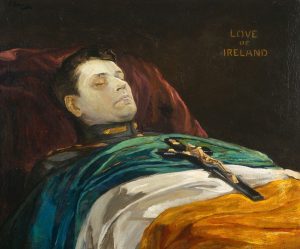
It could have assembled a dozen or so paintings loosely connected to 1916 and the War of Independence, by John Lavery, Sean Keating and Jack Yeats, but that would have looked pretty thin. So instead, very smartly, the Gallery took the opportunity to stage a full-scale exhibition of Irish history painting. Or perhaps more accurately, Irish history in painting. It’s called “Creating History”, it’s free at the Gallery in South Leinster Street in Dublin until mid-January, and it’s wonderful.
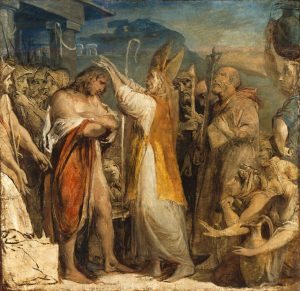
There’s no shortage of Irish history, and no shortage of painterly opinions about Irish history. From St. Patrick making Irish Catholics out of the heathen Gael, to Brian Ború driving out them foreign Vikings in 1014, through the foundation myths of Irish Unionism, the siege of Derry and the Battle of the Boyne, they’re all here.
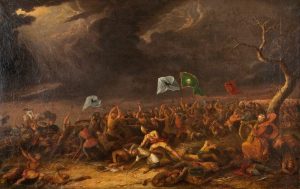
And all wear their hearts on their sleeves. “Tendentious” seems to have been a kind of oil paint. But the deeply sectarian politics they embody has become irrelevant, and its melting away has made the paintings themselves stranger and more beautiful. And most of them are huge – visiting in person is the only way to get a full sense of their scale.
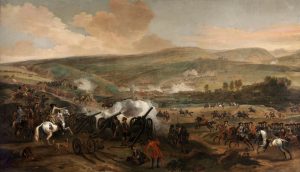
Perhaps the most poignant are the works depicting nineteenth-century visits to Ireland by British monarchs, deeply self-important at the time and now competely forgotten. My favourite is the painting of the hordes who turned out at Kingstown to see off George IV in 1821. Or maybe they were out in their thousands in astonishment that the sun was setting due North, right over Howth.
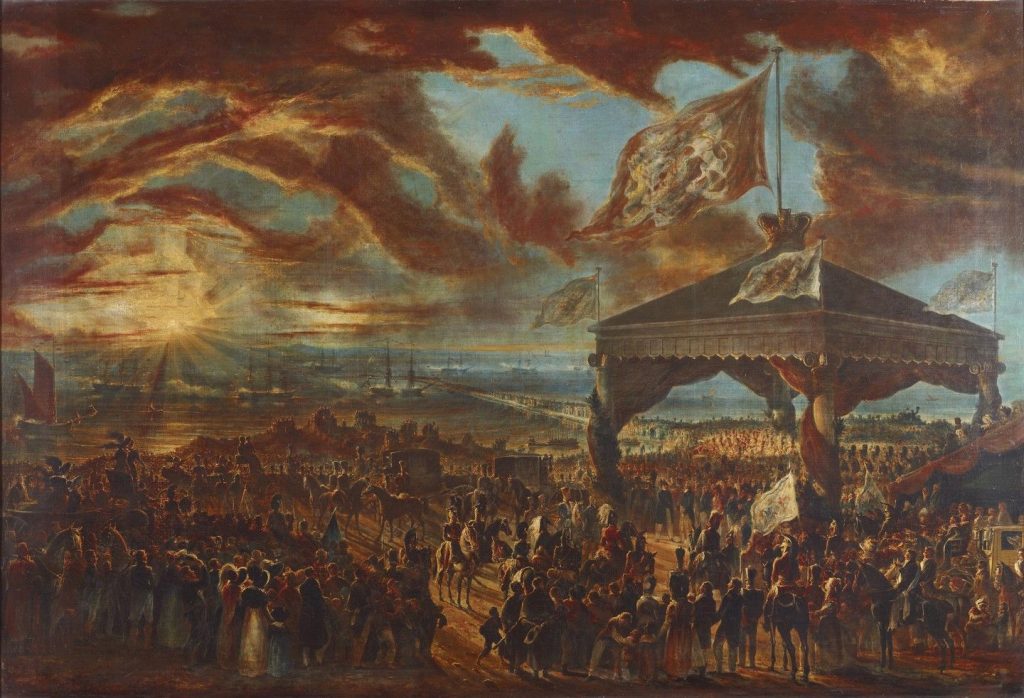
The only disappointment is the absence of Daniel Maclise’s deliriously lurid ‘The Marriage of Aoife and Strongbow’, depicting in detail all seven centuries of sorrowful Irish history springing from the union of the Gael Aoife with the Norman Strongbow. I suspect the only reason it’s missing is that they just couldn’t get it in the room. At 10ft by 16ft, it’s the size of a large billboard. Appropriately enough.
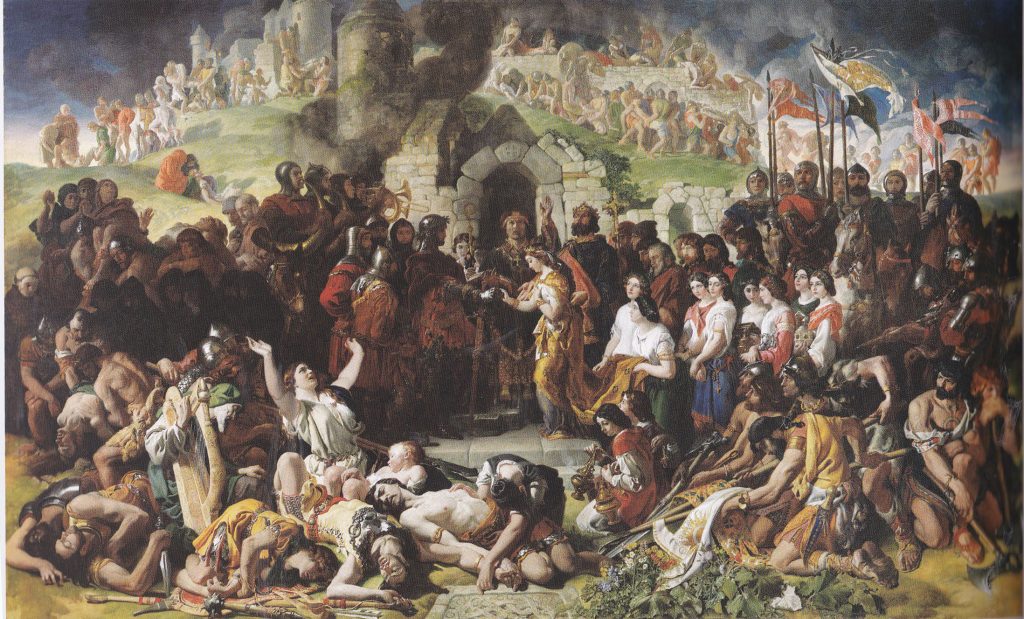
Beautiful!
Thank you John for sharing these beautiful paintings. I especially like the painting of Michael Collins by John Lavery.
Wish I was able to be there to see it in person! Thanks for sharing these beautiful paintings.
colleen
I agree – what beautiful scenes. Thanks
I would love to be able to see these beautiful paintings in person. Thank you, John for sharing them.
Great. I’ll be up to see them on Saturday. Thanks John.
Surely tha Maclise used to be on display, somewhere? I’m sure I’ve seen it in the flesh, so to speak.
It used to take up most of one of the big halls before the renovations began about four years ago. I’m sure it’ll be back
I enjoyed the pictures very much. It is always good to read your letters and what you share with us. I am looking forward to future emails.
I wish I knew more about Irish History – but only recently I found that we are descended from an Irish patriot (I think) named Rory O’More, through is son, James, Royal Governor of Carolina, through his son, Col. James Moore, Governor of SC from the ‘other side’ of the blanket – his 1/2 Cherokee ‘wife’.
Exactly what did Rory O’More do? Someone also told me that there was a bridge in Dublin named for him – is this true! My DNA did show more Irish heritage than I thought it would but then I began going through my genealogy and found more families than I remembered. I knew that some of my family were Scots Irish who went to Ireland during the plantation settlements, but their descendants came to America when SC was giving free land to protestant Irish (I have no idea why the Catholic were left out), and I found the documents granting the land to my Cunningham family. John Cunningham was 14 when he arrived and became a Lt Col in the Georgia militia and as a major was commander of the GA sharpshooters at the Cowpens battle that sent ‘butcher’ Tarleton running ‘home’ to Cornwallis.
This would be a great exhibition in America. Maybe a museum would want to host these lovely historic paintings.